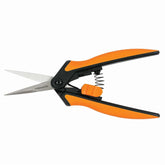The Ultimate Guide to Plant Cloning: How to Reproduce Your Preferred Cultivar with Precision
The Ultimate Guide to Plant Cloning: How to Reproduce Your Preferred Cultivar with Precision
Master the art of plant cloning to consistently reproduce your preferred cultivar. Learn best practices, environmental tips, and must-have products like Root Riot Cloning Cubes and Clonex Cloning Gel for optimal success.
Introduction: What is Plant Cloning?
Cloning is a foundational technique in indoor cultivation, allowing growers to replicate their preferred cultivar with consistency and precision. Rather than relying on seeds that can vary genetically, cloning enables you to produce genetically identical plants from a single mother plant.
Whether you're a home grower perfecting your craft or a commercial grower looking to scale with uniform results, cloning is one of the most effective ways to maintain desirable traits such as growth speed, yield, flavor, and vigor. In this comprehensive guide, we’ll cover:
The science of cloning
Environmental requirements
Cleanliness protocols
Benefits of plant cloning
Step-by-step best practices
Recommended products from LakesAreaGrowCo.com
Why Growers Clone Plants
Cloning allows growers to preserve and multiply a high-performing cultivar without the unpredictability of seeds. It offers advantages such as:
Genetic Consistency: Every clone inherits the exact same genetic makeup, ensuring uniform growth, flavor, and aroma.
Cost-Effectiveness: Skip the seed phase and reduce your overall production costs.
Time Efficiency: Clones mature faster than seed-grown plants, shortening your cultivation cycle.
Preservation of Elite Genetics: Maintain elite phenotypes for multiple generations without degradation.
Environmental Conditions for Cloning Success
Successful cloning requires a controlled environment with precise light, temperature, and humidity levels. Here's what works best:
Temperature
Ideal Range: 70–80°F
Avoid extreme fluctuations, which can slow rooting or kill delicate cuttings.
Humidity
Optimal Humidity: 75–85%
Use a humidity dome or small tent to create a stable microclimate.
Mist the interior to maintain moisture, especially in the first 5–7 days.
Lighting
Use low-intensity lighting like T5 fluorescent lights or full-spectrum LED clones bars.
Photoperiod: 18–24 hours of light per day.
Avoid high-intensity grow lights, which can stress unrooted cuttings.
At LakesAreaGrowCo.com, we carry a curated selection of LED clone lights and humidity domes designed for optimal cloning conditions.
---
Cleanliness: The Unsung Hero of Cloning
Sanitation is critical. Clones are highly vulnerable to disease and mold. Follow these protocols:
Always sterilize scissors, razors, and work surfaces using isopropyl alcohol.
Wear latex or nitrile gloves to avoid introducing pathogens.
Clean your clone trays, domes, and grow tents after every cycle.
Use sterile Root Riot Cloning Cubes to give your clones a clean, uniform rooting environment.
Best Products for Cloning Success
To improve your cloning success rate, invest in trusted propagation products:
Made from composted organic materials
Ideal moisture retention and oxygen balance
Ready-to-use out of the bag
Hormone-rich rooting gel that speeds up root development
Forms a protective seal around the cut site
Proven to increase cloning success rates
Both products are available now at LakesAreaGrowCo.com—trusted by growers across the country.
Step-by-Step Cloning Process
Follow these cloning best practices to ensure healthy root development:
1. Select a Healthy Mother Plant
Choose a vigorous, pest-free cultivar in its vegetative stage.
Avoid cloning from flowering plants or stressed mothers.
2. Take the Cutting
Use a sterile razor or scissors.
Cut a 4–6 inch branch at a 45-degree angle just below a node.
3. Apply Rooting Hormone
Immediately dip the cut end into Clonex Cloning Gel.
4. Insert into Root Riot Cloning Cube
Firmly place the cutting into a pre-moistened cube.
Avoid pushing too hard—just snug enough to hold the stem.
5. Place in Humidity Dome
Keep under low-intensity light with good air circulation.
Mist inside of dome daily and monitor temperature and humidity.
6. Wait for Root Development
Roots typically appear in 7–14 days, depending on conditions.
Do not overwater—let cubes stay damp, not soaked.
7. Transplant and Feed
Once strong roots are visible, transplant to your desired medium.
Water in with a mild nutrient solution. If using soil, add Real Growers Recharge to kickstart microbial activity.
Common Mistakes to Avoid
Even experienced growers make these cloning errors:
Using dull or contaminated tools
Letting humidity drop below 70%
Exposing clones to high heat or direct light too early
Forgetting to label different strains or cultivars
Stay consistent with your protocols, and keep a grow journal to track performance across different clone cycles
Master the Art of Cloning with Lakes Area Grow Co.
Cloning is one of the most effective techniques for ensuring consistent success with your preferred cultivar. By mastering environmental control, using sterilized tools, and leveraging proven products like Root Riot Cloning Cubes and Clonex Cloning Gel, you can dramatically increase your propagation success rate—whether you’re a hobbyist or a commercial operation.
Ready to start cloning like a pro? Visit LakesAreaGrowCo.com for top-tier products, expert advice, and grower-tested tools that support every step of your cultivation journey.







Leave a comment
Please note, comments need to be approved before they are published.